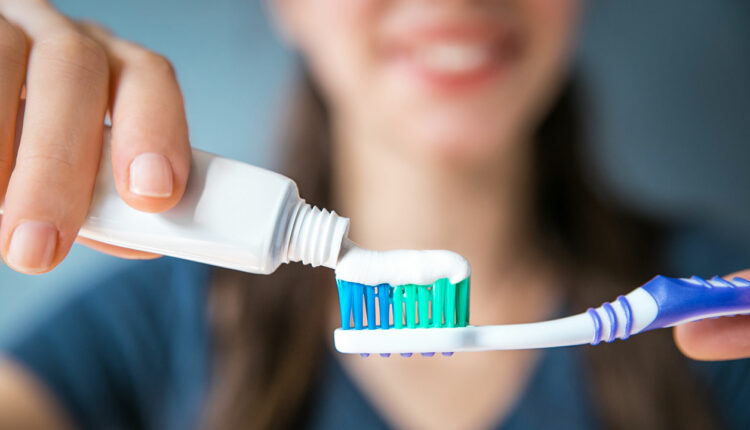 busracavus / iStock / Getty Images Plus
busracavus / iStock / Getty Images Plus
Dental Hygiene Strategies to Prevent Recession
Oral hygiene technique can significantly impact patients’ risk for gingival recession.
As part of the initial recare visit, oral hygiene technique must be reviewed. Studies show that improper toothbrushing can harm gingival tissues with brushing pressure and bristle type serving as the most important determinants.1 In fact, in the vast majority of cases of dentinal hypersensitivity, a hard bristle toothbrush was used.2
Patients should instead use a soft toothbrush or a power toothbrush with a pressure indicator. Evidence suggests these tools help minimize aggressive brushing patterns.3 Technique and angulation affect plaque removal regardless of the toothbrush type. Proper oral hygiene reduces bacterial load and inflammation, which in turn, lessens discomfort and attachment loss.3
Toothpaste Selection
Selecting the proper dentifrice is equally important in patients with sensitivity concerns. The relative dentin abrasivity (RDA) value measures the abrasiveness of toothpaste on dentin. RDA is directly related to dentin loss, which contributes to dentinal hypersensitivity. Although this presentation is multifactorial, using a toothpaste with a low RDA can help minimize its symptoms and progression.2 Toothpaste with a RDA value of 0 to 70 is categorized as “low abrasion” and should be recommended to patients with existing sensitivity or exposed root surfaces.2
Patients should also consider a toothpaste with ingredients such as calcium sodium phosphosilicate, arginine and calcium carbonate, strontium, or potassium nitrate. These ingredients depolarize the nerves or block dentinal tubules to prevent fluid movement, thereby decreasing nerve conduction and hypersensitivity.3
Because of the different mechanisms by which sensitivity-relief toothpastes work, patients may need to try several first or use them for weeks at a time before finding one that alleviates their symptoms. For some patients, a high-fluoride concentration toothpaste may also be beneficial.2
Follow-Up Is Required
When surgery is pursued, patients must establish regular recare appointments, in addition to the recommended post-operative follow-ups with their specialist. Significantly greater root coverage and better long-term marginal stability were achieved in patients who followed up with the treating surgeon compared to the general dentist.4 Furthermore, evidence suggests patients who have undergone surgery benefit from an alternating maintenance schedule between their general dentist and periodontist.4
At each visit, a periodontal exam, prophylaxis, and evaluation by the dentist should take place. The aforementioned tools and habits should be reinforced, and regular maintenance and proper oral hygiene need to be stressed as keys to long-term treatment success.
If patients are not surgical candidates due to medical or financial limitations, their symptoms can still be managed during recare visits. Topical fluoride varnish application provides longer relief than the potassium nitrate found in many sensitivity-relief toothpastes.3
Laser Treatment Is an Option
Laser therapy is a more novel approach to relieving hypersensitivity and includes low- and mid-output power lasers, such as diode, Nd:YAG, Er:YAG, and CO2.2 The exact mechanism is unknown. Each laser affects the tissues differently depending on its wavelength, power density, and mode. It is assumed that they provide an analgesic effect by occluding the dentinal tubules when used directly over the tooth surface.5 However, a weak association exists with this technology given its strong placebo effect in which patients feel immediate relief afterward.6 With the proper training and state credentialing, dental hygienists can perform this procedure.
References
- Addy M, Hunter ML. Can toothbrushing damage your health? effects on oral and dental tissues. Int Dent J. 2003;53:177–186.
- Clark D, Liran L. Nonsurgical management of tooth hypersensitivity. Int Dent J. 2016;66:249–256.
- Imber JC, KasaJ A. Treatment of gingival recession: When and how? Int Dent J. 2021;71:178–187.
- McGuire MK, Scheyer ET, Snyder MB. Evaluation of recession defects treated with coronally advanced flaps and either recombinant human platelet-derived growth factor-BB plus β-tricalcium phosphate or connective tissue: comparison of clinical parameters at 5 years. J Periodontol. 2014;85:1361–1370.
- Matsumoto K, Kimura Y. Laser therapy of dentin hypersensitivity. J Oral Laser Application. 2007;7:7–25.
- Sgolastra F, Petrucci A, Gatto R, Monaco A. Effectiveness of laser in dentinal hypersensitivity treatment: a systematic review. J Endod. 2011;37:297–303.
This information originally appeared in Saltz AE, Sirois V. The dental hygienist’s role in treating gingival recession. Dimensions of Dental Hygiene. May 2022; 20(5)32-35.

